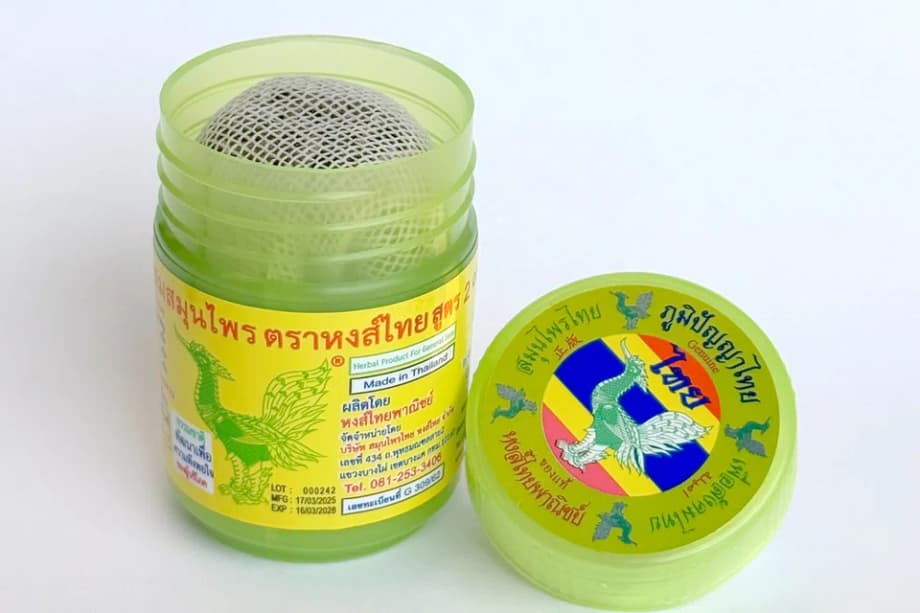Immediate move to nuclear sterilisation after FDA alert
Thailand’s Food and Drug Administration detected microbial contamination in a batch of Hong Thai Herbal Inhaler Formula 2, lot 332. The brand responded with a nationwide recall of the affected lot and announced a shift to nuclear technology for sterilisation across its entire product line. The company says it will take full responsibility and wants to move quickly to restore consumer trust.
Hong Thai has partnered with the Thailand Institute of Nuclear Technology, known as TINT, to adopt cold sterilisation irradiation. The method uses ionising energy from electron beam equipment and gamma rays from Cobalt 60 to eliminate microbes without applying heat or chemicals. The non thermal process is designed to preserve the volatile essential oils that give the inhalers their scent and perceived medicinal properties.
TINT will treat finished products in their final packaging inside a closed irradiation centre run by trained specialists under international standards. Hong Thai says factory upgrades and new quality controls will be completed in seven days. TINT hopes the collaboration will set a higher benchmark for Thai herbal goods and rebuild confidence at home and in export markets.
What went wrong and how the recall unfolded
The FDA announcement set off a rapid chain of events. Tests confirmed microbial contamination in Formula 2, lot 332. Hong Thai began pulling this lot from stores across Thailand and asked customers to return affected items for refunds. The owner said the company accepts full responsibility for the incident and for the inconvenience caused to shoppers and retail partners.
Regulators and police raided several locations linked to the brand soon after. Authorities said some sites were operating without proper manufacturing licenses. More than 2 million herbal inhalers and related items were seized from facilities in Bangkok and nearby provinces, with a total value reported in the hundreds of millions of baht.
Raids and licensing questions
Company founder Theerapong Rabuetham said the core licensed site met standards, but a separate label and packaging space had not yet completed its licensing process. He said extra space and new machines were rented to cope with a surge in orders while a new plant, built to approved plans, awaited final paperwork. He described the enforcement as premature and said the seized items were not counterfeit, adding that labeling and bulk packing had been carried out in a clean but not fully licensed facility.
The episode hit the brand hard. Theerapong said trust had fallen sharply and that rebuilding would take time. He presented the partnership with TINT as the quickest route back to safety and to compliance that can be verified by independent experts.
How cold sterilisation irradiation works
Irradiation uses energy that disrupts the DNA of bacteria, fungi and spores so they cannot reproduce. The method is widely used around the world to sterilise medical devices and to decontaminate spices and dried foods. For herbal inhalers made from plant materials, the goal is to cut microbial levels to safe limits without changing the scent or the physical and chemical profile of the oils.
TINT operates electron beam systems that deliver a controlled high energy beam with shallow penetration, which suits compact products and high throughput. The institute also uses gamma irradiation from Cobalt 60, which penetrates deeper for dense or irregularly shaped packages. Engineers choose the modality based on product size, density and packaging, with the dose planned to meet a defined safety target.
Because no heat is applied, the process is called cold sterilisation. That matters for inhalers that contain volatile compounds such as menthol, camphor and essential oils. Treating items after they are sealed reduces the risk of re contamination during transport and storage, which is often a weak point in conventional sterilisation lines.
Before each run, dosimeters confirm the planned dose inside and around the product. Validation shows that microbes of concern are inactivated to the target level. A typical cycle takes one to two days from intake to release, including handling and quality checks. The approach aligns with guidance from international bodies such as the World Health Organization and the International Atomic Energy Agency.
Is radiation sterilisation safe for consumers
Radiation in this context is energy, not radioactive material left behind in the product. After treatment, an inhaler does not carry residual radiation and it does not become radioactive. That point is established science and appears in policies from the WHO, the IAEA and national regulators. The process also leaves no chemical residues because no sterilant chemicals are used.
Kamol Unchoo, manager of TINT’s radiation processing centre, sought to address public concerns in clear terms. He said the technology eliminates microorganisms without leaving any radiation in the product and that it is safe when operated under strict standards.




